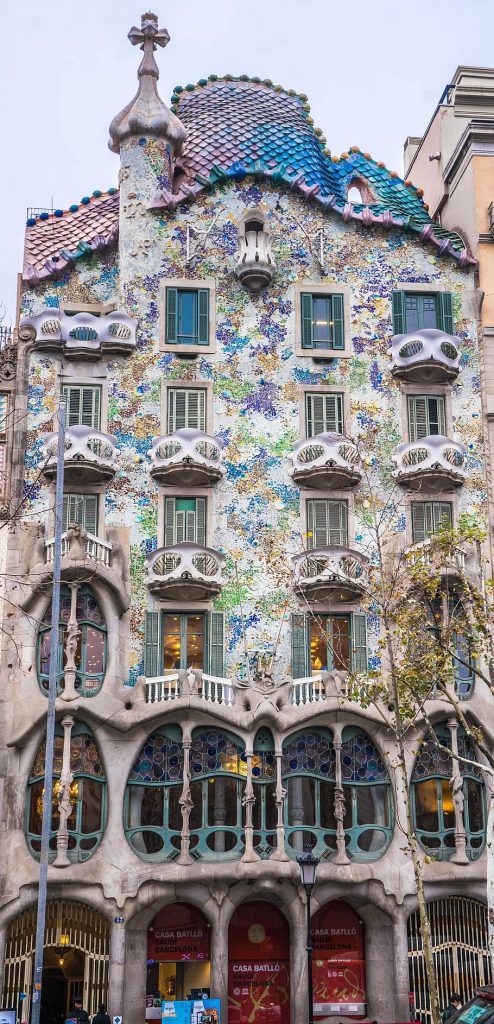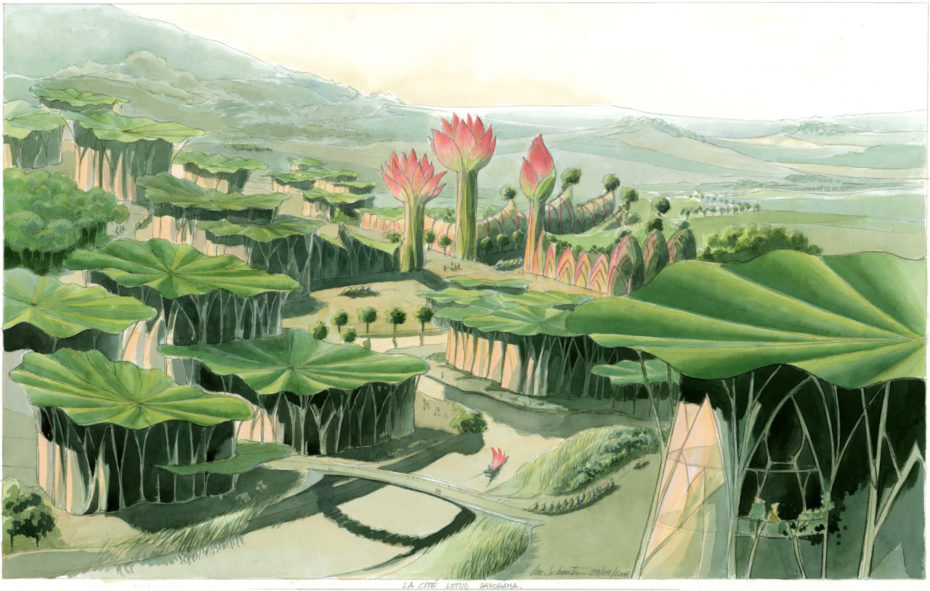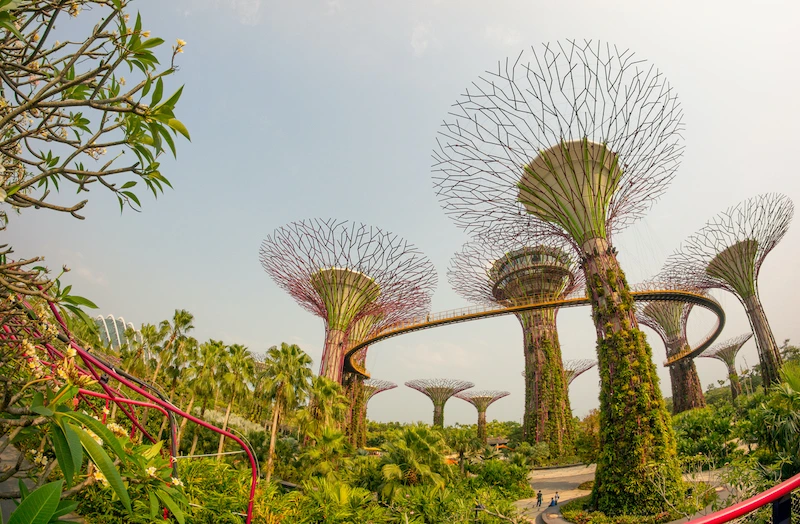Here’s a practical application of the ideas around ‘biophilia’:
One of the aims of the solarpunk movement, it seems, is to keep the dystopian cityscapes of Blade Runner and The Fifth Element at bay… An antidote to this abundance of steel is now given in the form of the ‘sustainable city’, or the ‘green city’, a hybrid creation that is meant to function as a well-oiled ecosystem.
Tim Beatley envisions what he calls ‘biophilic cities’, arguing that in the endeavour to green our cities, planners focus on everything but nature. His view emphasises nature: ‘Biophilic Cities acknowledge the importance of daily contact with nature as an element of a meaningful urban life, as well as the ethical responsibility that cities have to conserve global nature as shared habitat for non-human life and people’.
anthroposcenery… and the biophilic city – Sidmouth Solarpunk
And here are some further examples of town and cityscapes we can call ‘biophilic’:

Solarpunk, Art Nouveau and Barcelona – Sidmouth Solarpunk

Luc Schuiten, godfather of solarpunk – Sidmouth Solarpunk
Going back to basics with the Encyclopaedia Britannica:
Biophilia hypothesis, idea that humans possess an innate tendency to seek connections with nature and other forms of life. The term biophilia was used by German-born American psychoanalyst Erich Fromm in The Anatomy of Human Destructiveness (1973), which described biophilia as “the passionate love of life and of all that is alive.” The term was later used by American biologist Edward O. Wilson in his work Biophilia (1984), which proposed that the tendency of humans to focus on and to affiliate with nature and other life-forms has, in part, a genetic basis.
Biophilia hypothesis | Description, Nature, & Human Behavior | Britannica
And the pursuing the idea further into the world of design and architecture with Wikipedia – starting with the city-scale:
Timothy Beatley believes the key objective of biophilic cities is to create an environment where the residents want to actively participate in, preserve, and connect with the natural landscape that surrounds them. He established ways to achieve this through a framework of infrastructure, governance, knowledge, and behavior; these dimensions can also be indicators of existing biophilic attributes that already exist in current cities.
Going on to the use of these principles in building standards:
Given the increased information supporting the benefits of biophilic design, organizations are beginning to incorporate the concept into their standards and rating systems to encourage building professionals to use biophilia in their projects. As of now, the most prominent supporters of biophilic design are the WELL Building Standard and the Living Building Challenge.
And finishing with some fantastic building-scale examples of the application of the same principles:

It is everywhere;
10 examples of biophilic architecture and design – University College of Estate Management
But is it more than just a few potted plants dotted around the office?
To finish, here’s a research paper looking at the issues:
Biophilic design in architecture and its contributions to health, well-being, and sustainability: A critical review
In the last ten years, ‘nature’ and biophilic design have received widespread attention in architecture, especially in response to growing environmental challenges. However, open questions and controversies remain regarding conceptualizing and addressing ‘nature’ in practice and research. This study conducts a literature review to discuss biophilic design as a theoretical framework to interpret ‘nature’ in architecture. The following questions are answered: (1) How has the concept of biophilic design emerged, and how can it be defined? (2) In what ways can biophilic design contribute to the goals of sustainable architecture? (3) What are the key design strategies in biophilic design? This review identifies and compares the key frameworks of biophilic design and explains their major elements. We then analyse the benefits (e.g., enhance health, well-being, productivity, biodiversity, and circularity) of biophilic design in achieving sustainability, as framed through the UNSustainable Development Goals. The results indicate that biophilic design is more complex and richer than the mere application of vegetation in buildings; it broadens the variety through encompassing different types of nature from physical, sensory, metaphorical, morphological, material to spiritual. Moreover, knowledge gaps are identified to motivate future research and critical reflections on biophilic design practices.
…
